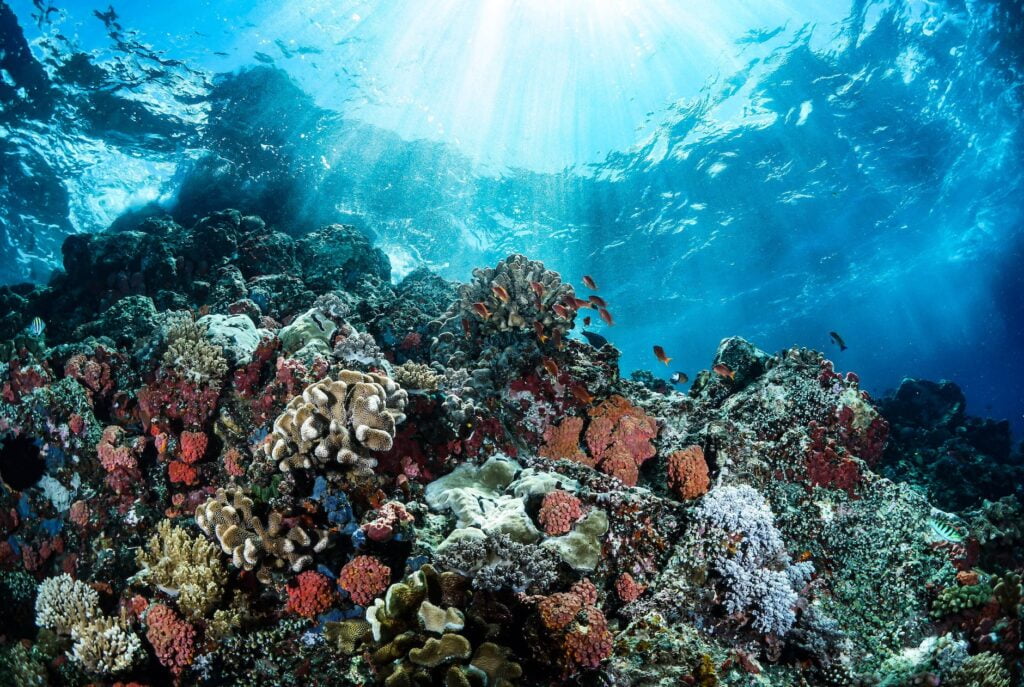Resilience is a powerful word. It evokes emotions of survival and perseverance. It also paints a picture of environmental health. We want a resilient environment, no doubt. Without the ability to be resilient, our environment would not be able to handle any variability. Resilience can therefore be a factor in determining ecosystem health and sustainability. But ensuring resilience relies on something called biodiversity.
What is biodiversity?
Biodiversity, as the name implies, is shorthand for biological diversity. It is defined as the variability of living organisms within the ecosystems they are a part of. Overall, it’s a lens with which we can view the variation of all life and how it’s all connected.
You can use this term broadly by using it to refer only to the diversity of ecosystems, or you can get as specific as referring to diversity within a species. So, it can be used to describe different systems and scenarios at all levels. Most typically, however, we look at biodiversity from the three levels of genetic diversity, species diversity, and ecosystem diversity.
The term biodiversity also encompasses other terms such as richness, meaning the number of species, and evenness, meaning the relative abundance of species. Therefore, biodiversity is an important determinant of biological community structure.
Why does community structure matter?
In any community, species exist within a network of other potentially interacting species. This is where food chains come from! Community structure is important because it shows how groups of species occur together using the same types of resources.
In the presence of interacting species, species find their own space to occupy called their realized niche. Two species cannot coexist on one limiting resource so, when a community consists of species that utilize different spaces the overall efficiency of resources used is increased. This is called niche complementarity and it leads to higher overall productivity. By utilizing realized niches, the total resources that can be used are increased and this allows species to coexist sustainably!
How does this contribute to environmental health?
Efficiently using resources ensures limiting resources aren’t used to exhaustion. So, species can capitalize on specializing in using a non-limited resource or using a resource differently. Having a more biodiverse ecosystem, therefore, makes for a more productive environment.
Having a productive environment leads to community and ecosystem stability. As a result of resource specialization, that ecosystem can support more life and provide more ecosystem services. Ecosystem services include climate regulatory services, like carbon sequestering and storage. So, a productive ecosystem can provide services such as water regulation, improved soil quality, and the removal of carbon from the environment.
Communities with more species also have greater temporal stability, giving ecosystems the opportunity to be more consistent in response to environmental change. Furthermore, systems with high biodiversity are more likely to contain positive relationships between species. For example, areas with high plant diversity should also have high herbivore diversity.
So, having a biodiverse ecosystem maxes out productivity because ecosystem functioning is sensitive to biodiversity. This is called the diversity-stability hypothesis and it’s widely accepted as time and again a positive relationship is shown between the two.
What does this mean for conservation efforts?
The IPCC 2023 report shows that viable ecosystems will play a huge role in taking carbon out of the environment. After all, biodiverse ecosystems can remove the most carbon. This is critical for us to meet conservation goals and mitigate climate change.
Evidence also strongly supports that the capacity to resist change or recover from a disturbance is dependent on biodiversity. With high biodiversity, the likelihood of responding resiliently to change is increased. Furthermore, it’s well documented that species-poor areas are more greatly harmed by disturbance events and take a longer time to recover. So, having an increased tolerance to a wide range of environmental conditions is crucial in the wake of the climate crisis.
Environmental context and changes in biodiversity can change the outcome of species interactions too. Altering these complex relationships influences an ecosystem’s ability to provide its necessary services. Not only that but focusing on biodiversity helps us understand species and community persistence while also increasing our understanding of extinction risks and trickle-down effects. Knowing how things respond to stressors and finding ways to adapt accordingly is a key point to conservation efforts!
Biodiversity is critical in protecting against climate change.
When talking about biology, resilience refers to the ability to persist in a current state while also maintaining the ability to respond to changing environmental conditions. It’s the amount of disturbance an ecosystem can take without changing.
Therefore, to meet conservation goals, it’s important we ensure that biodiversity can continue to contribute to adaptation to climate change and climate change mitigation. Biodiversity is an important determinant of ecosystem flexibility. Species’ responses ultimately determine the ability to persist under a changing climate. So, it’s important to maintain ecosystem resilience and corresponding biodiversity to facilitate this adaptive potential and sustain productivity.
We must press leaders to address management at an ecosystem scale to ensure their continued existence and preserve the services they provide. Maintaining and restoring biodiversity promotes resilience and is an essential safeguard against climate change impacts.

